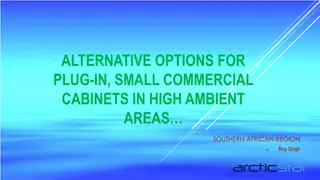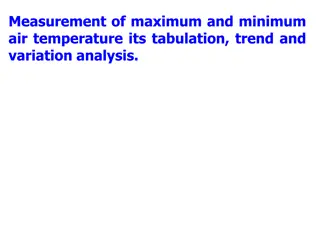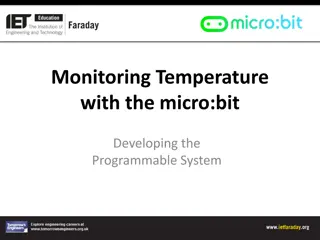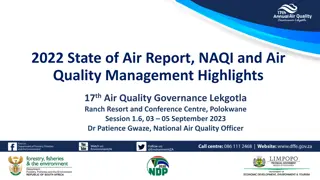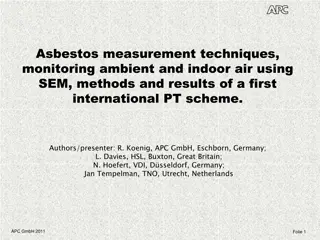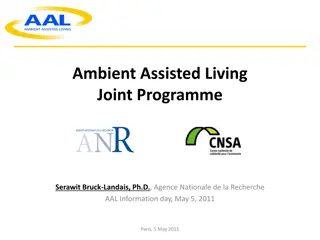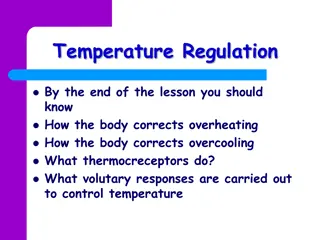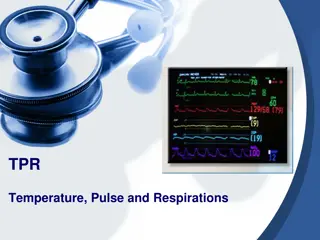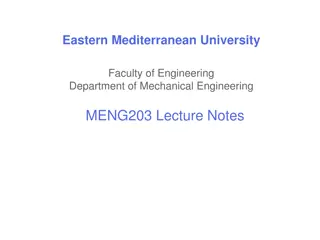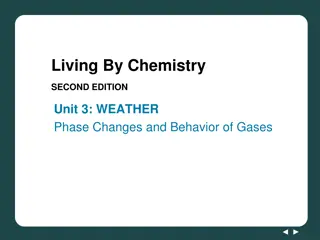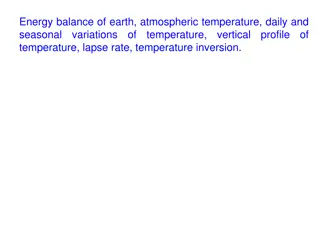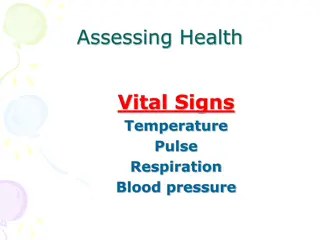Design Considerations for High Ambient Temperature Operations
Designing for high ambient conditions requires special attention to condensing temperatures, refrigerant types, safety standards, and component availability. Careful selection of heat exchangers, compressors, and system applications is crucial to ensure energy efficiency and safety in various cooling systems. Challenges include balancing energy efficiency with refrigerant charge limits for optimal performance.
- Design considerations
- High ambient temperature
- Refrigeration systems
- Energy efficiency
- Safety standards
Download Presentation

Please find below an Image/Link to download the presentation.
The content on the website is provided AS IS for your information and personal use only. It may not be sold, licensed, or shared on other websites without obtaining consent from the author. Download presentation by click this link. If you encounter any issues during the download, it is possible that the publisher has removed the file from their server.
E N D
Presentation Transcript
Overall issues for adequate design for high-ambient temperature operation by: Samir Hamed Petra Engineering Ind. Co. Rtoc member
Design for high ambient conditions The design for high ambient needs special care to avoid excessive condensing temperatures and getting close to the critical temperature for each type of refrigerant. Other issues like safety, refrigerant charge quantity, and improving the energy efficiency for both partial and full load have to be taken into consideration. Design for high ambient conditions /heat exchangers In regions with high ambient conditions, special care in selecting and designing of the heat exchangers must be taken into consideration by using smaller tube diameters of 5 or 7 mm with larger primary and secondary surface areas or by using micro-channel type of heat exchangers to increase heat transfer and to reduce the condensing temperature. One of the major factor in the design of chilled water systems is the use of brazed plate- type heat exchanger for both condenser, Design for high ambient conditions / compressors Compressor manufacturers offer scroll, reciprocating, and screw compressors for small and medium size units running with low-GWP refrigerants.
Design for high ambient conditions / Components availability The availability of the refrigeration accessories like expansion valves, solenoid valves and other accessories is available but extra check and certification might be required to get them commercially available to meet the future demand for the low GWP refrigerants Design for high ambient conditions/ safety standards Unfortunately national safety standards in high ambient countries have not yet been adopted or implemented yet. Standards, like ISO 5149, EN 378, IEC 60335-2-40 for air conditioners and heat pump systems need to be implemented and IEC 60335-2-89 for commercial refrigeration appliances, need to be adapted before the new refrigerants (that are mostly flammable) can be placed on the market.
System applications which meet the new requirements and location classes relatively easy to change ?? The main challenge for high ambient conditions is the balance between energy efficiency and maximum refrigerant charge limits for safety. 1-Outdoor installed rooftop package units with multi independent refrigeration circuit which can be used with high flammable refrigerant 3 or 2L categories. 2-Outdoor installed chillers air cooled or water cooled type which used to distribute the chilled water into the building which can also be used in location class A
Capacity CURVE(All conditions based on SASO standard 2681) 1.80 1.70 1.60 R290 Capacity TR 1.50 R32 R22 1.40 R134a R407c R410A 1.30 1.20 1.10 25 35 46 52 20 25 30 35 40 45 50 55 Ambient (C ) Return Dry/Wet = 21/15 C Return Dry/Wet = 27/19 C Return Dry/Wet = 29/19 C Return Dry/Wet = 32/23 C
COP CURVE 3.50 3.30 3.10 2.90 R290 R32 R22 R134a R407c R410A 2.70 COP 2.50 2.30 2.10 1.90 1.70 1.50 20 25 30 35 Ambient (C ) 40 45 50 55
COP PERCENTAGE (Related to R22) 46 C 25 C Ambient 35 C (Low Ambient) (High Ambient) R290 2.45% -2.19% -0.97% R32 6.47% 1.66% -7.39% R134a -11.80% -6.97% -8.70% R407c -10.05% -4.55% -13.04% R410A 8.34% 3.47% -12.61% R410A & R32 R22 & R290
SUMMARY We need time to adopt the low GWP in the A/C equipment in the high ambient conditions but we can start promoting this with special financial support from the UN organizations to cover the cost of the transfer R290,R32,-----ETC yet are the options which need more researches and safety standards to adopt in order to make these refrigerant suitable for high ambient conditions Changing from HFC to HC (or low GWP refrigerant) needs a special care and a lot of efforts in regards of design, components selection, training-Currently there are not many technicians that have HC split air-conditioning experience-and for the safety issues Some systems are easy to change with some modifications ? As it is installed outdoor like chillers, Rooftop and some systems are not easy to change to the new low GWP refrigerant like SPLIT, VRF ,,etc


